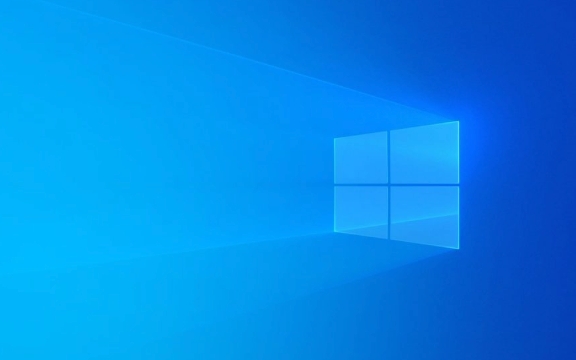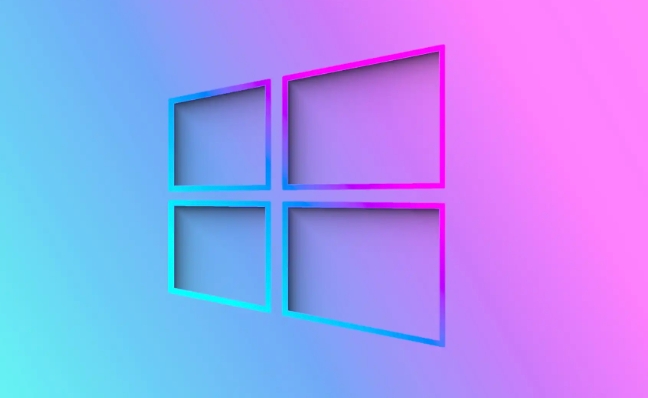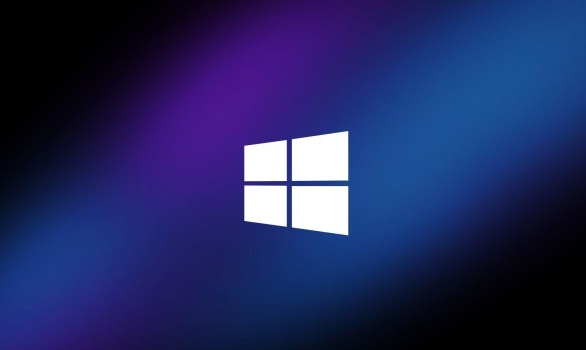Disable "Use the On-Screen Keyboard" in Ease of Access settings by going to Settings > Ease of Access > Keyboard and toggling it off. 2. Turn off automatic touch keyboard options in Settings > Devices > Typing by disabling "Show the touch keyboard when not in tablet mode and no keyboard is attached" and "Show the touch keyboard when there's no keyboard attached and Windows detects you're in a tablet position". 3. Check for stuck keys, clean your keyboard, or update drivers if Windows誤detects hardware issues. 4. Disable the Touch Keyboard and Handwriting Panel Service via services.msc by setting its Startup type to Disabled. 5. Fix persistent issues via Registry by navigating to HKEY_CURRENT_USER\Software\Microsoft\TabletTip\1.7, creating or setting the DWORD "ShowTouchKeyboard" to 0, then restarting the PC. Additionally, disable the on-screen keyboard at the login screen in Settings > Accounts > Sign-in options to prevent pop-ups during sign-in, and be aware that certain apps may trigger it if touch settings are active; addressing each setting systematically will stop the unwanted pop-ups.

The Windows 10 on-screen keyboard keeps popping up unexpectedly—especially when using login screens, browsers, or certain apps—is a common and frustrating issue. It usually happens due to accessibility settings, touch/pen input detection, or specific app behaviors. Here’s how to stop it from appearing automatically.

1. Disable "Use the On-Screen Keyboard" in Ease of Access Settings
Windows may be set to launch the on-screen keyboard automatically when it detects no physical keyboard or based on accessibility preferences.
Steps:

- Press
Win Ito open Settings. - Go to Ease of Access > Keyboard.
- Toggle off "Use the On-Screen Keyboard" (this disables the auto-launch feature).
Note: Even if you don’t use it, this setting can be triggered by system events like login or password prompts.
2. Turn Off "Automatically Show the On-Screen Keyboard" in Touch Keyboard Settings
If you have a touchscreen or Windows thinks you do, it might trigger the keyboard.

Steps:
- Right-click the taskbar and select "Show touch keyboard button" (uncheck it if visible).
- Or go to Settings > Devices > Typing.
- Under "Touch keyboard," turn off:
? "Show the touch keyboard when not in tablet mode and no keyboard is attached"
? "Show the touch keyboard when there's no keyboard attached and Windows detects you're in a tablet position"
This stops Windows from guessing you need the keyboard.
3. Check for Stuck or Malfunctioning Physical Keyboard
Sometimes Windows thinks your physical keyboard isn’t working—maybe due to a stuck key (like Ctrl, Alt, or Windows key) or driver issues—so it launches the on-screen version as a fallback.
What to try:
- Unplug and replug your keyboard (or restart if laptop).
- Test on another device if possible.
- Clean around keys—debris can cause keys to stick.
- Update or reinstall keyboard drivers via Device Manager.
4. Disable Touch Keyboard Service (Advanced)
If you never use the on-screen keyboard, you can disable the service entirely.
Warning: Only do this if you're sure you won’t need it.
Steps:
- Press
Win R, typeservices.msc, and press Enter. - Scroll down to "Touch Keyboard and Handwriting Panel Service".
- Right-click it > Properties.
- Set Startup type to Disabled.
- Click Stop (if it's running), then Apply.
This prevents the keyboard from launching under any condition.
5. Fix via Registry (If Problem Persists)
Sometimes a registry flag gets set to always show the keyboard.
Steps:
- Press
Win R, typeregedit, press Enter. - Navigate to:
HKEY_CURRENT_USER\Software\Microsoft\TabletTip\1.7 - Look for a DWORD value named "ShowTouchKeyboard".
- If it exists, double-click it and set its value to 0.
- If it doesn’t exist, you can create it (right-click > New > DWORD 32-bit > name it exactly).
Restart your PC afterward.
Final Notes
- The on-screen keyboard often appears at the login screen if accessibility options are enabled. You can disable this in Settings > Accounts > Sign-in options > Use the On-Screen Keyboard at the sign-in screen (turn off).
- Some apps (like Chrome or Edge) can trigger it when focusing on text fields if touch settings are active.
Basically, it comes down to accessibility settings, touch features, or false hardware detection. Tackle the settings one by one, and the pop-ups should stop.
The above is the detailed content of the win 10 on-screen keyboard keeps popping up. For more information, please follow other related articles on the PHP Chinese website!

Hot AI Tools

Undress AI Tool
Undress images for free

Undresser.AI Undress
AI-powered app for creating realistic nude photos

AI Clothes Remover
Online AI tool for removing clothes from photos.

Clothoff.io
AI clothes remover

Video Face Swap
Swap faces in any video effortlessly with our completely free AI face swap tool!

Hot Article

Hot Tools

Notepad++7.3.1
Easy-to-use and free code editor

SublimeText3 Chinese version
Chinese version, very easy to use

Zend Studio 13.0.1
Powerful PHP integrated development environment

Dreamweaver CS6
Visual web development tools

SublimeText3 Mac version
God-level code editing software (SublimeText3)

Hot Topics
 Windows Security is blank or not showing options
Jul 07, 2025 am 02:40 AM
Windows Security is blank or not showing options
Jul 07, 2025 am 02:40 AM
When the Windows Security Center is blank or the function is missing, you can follow the following steps to check: 1. Confirm whether the system version supports full functions, some functions of the Home Edition are limited, and the Professional Edition and above are more complete; 2. Restart the SecurityHealthService service to ensure that its startup type is set to automatic; 3. Check and uninstall third-party security software that may conflict; 4. Run the sfc/scannow and DISM commands to repair system files; 5. Try to reset or reinstall the Windows Security Center application, and contact Microsoft support if necessary.
 PEAK Voice Chat Not Working on PC: Check This Stepwise Guide!
Jul 03, 2025 pm 06:02 PM
PEAK Voice Chat Not Working on PC: Check This Stepwise Guide!
Jul 03, 2025 pm 06:02 PM
Players have been experiencing the PEAK voice chat not working issue on PC, impacting their cooperation during climbs. If you are in the same situation, you can read this post from MiniTool to learn how to resolve PEAK voice chat issues.Quick Navigat
 Windows stuck on 'undoing changes made to your computer'
Jul 05, 2025 am 02:51 AM
Windows stuck on 'undoing changes made to your computer'
Jul 05, 2025 am 02:51 AM
The computer is stuck in the "Undo Changes made to the computer" interface, which is a common problem after the Windows update fails. It is usually caused by the stuck rollback process and cannot enter the system normally. 1. First of all, you should wait patiently for a long enough time, especially after restarting, it may take more than 30 minutes to complete the rollback, and observe the hard disk light to determine whether it is still running. 2. If there is no progress for a long time, you can force shut down and enter the recovery environment (WinRE) multiple times, and try to start repair or system restore. 3. After entering safe mode, you can uninstall the most recent update records through the control panel. 4. Use the command prompt to execute the bootrec command in the recovery environment to repair the boot file, or run sfc/scannow to check the system file. 5. The last method is to use the "Reset this computer" function
 Proven Ways for Microsoft Teams Error 657rx in Windows 11/10
Jul 07, 2025 pm 12:25 PM
Proven Ways for Microsoft Teams Error 657rx in Windows 11/10
Jul 07, 2025 pm 12:25 PM
Encountering something went wrong 657rx can be frustrating when you log in to Microsoft Teams or Outlook. In this article on MiniTool, we will explore how to fix the Outlook/Microsoft Teams error 657rx so you can get your workflow back on track.Quick
 The RPC server is unavailable Windows
Jul 06, 2025 am 12:07 AM
The RPC server is unavailable Windows
Jul 06, 2025 am 12:07 AM
When encountering the "RPCserverisunavailable" problem, first confirm whether it is a local service exception or a network configuration problem. 1. Check and start the RPC service to ensure that its startup type is automatic. If it cannot be started, check the event log; 2. Check the network connection and firewall settings, test the firewall to turn off the firewall, check DNS resolution and network connectivity; 3. Run the sfc/scannow and DISM commands to repair the system files; 4. Check the group policy and domain controller status in the domain environment, and contact the IT department to assist in the processing. Gradually check it in sequence to locate and solve the problem.
 The requested operation requires elevation Windows
Jul 04, 2025 am 02:58 AM
The requested operation requires elevation Windows
Jul 04, 2025 am 02:58 AM
When you encounter the prompt "This operation requires escalation of permissions", it means that you need administrator permissions to continue. Solutions include: 1. Right-click the "Run as Administrator" program or set the shortcut to always run as an administrator; 2. Check whether the current account is an administrator account, if not, switch or request administrator assistance; 3. Use administrator permissions to open a command prompt or PowerShell to execute relevant commands; 4. Bypass the restrictions by obtaining file ownership or modifying the registry when necessary, but such operations need to be cautious and fully understand the risks. Confirm permission identity and try the above methods usually solve the problem.
 the default gateway is not available Windows
Jul 08, 2025 am 02:21 AM
the default gateway is not available Windows
Jul 08, 2025 am 02:21 AM
When you encounter the "DefaultGatewayisNotAvailable" prompt, it means that the computer cannot connect to the router or does not obtain the network address correctly. 1. First, restart the router and computer, wait for the router to fully start before trying to connect; 2. Check whether the IP address is set to automatically obtain, enter the network attribute to ensure that "Automatically obtain IP address" and "Automatically obtain DNS server address" are selected; 3. Run ipconfig/release and ipconfig/renew through the command prompt to release and re-acquire the IP address, and execute the netsh command to reset the network components if necessary; 4. Check the wireless network card driver, update or reinstall the driver to ensure that it works normally.
 How to fix 'SYSTEM_SERVICE_EXCEPTION' stop code in Windows
Jul 09, 2025 am 02:56 AM
How to fix 'SYSTEM_SERVICE_EXCEPTION' stop code in Windows
Jul 09, 2025 am 02:56 AM
When encountering the "SYSTEM_SERVICE_EXCEPTION" blue screen error, you do not need to reinstall the system or replace the hardware immediately. You can follow the following steps to check: 1. Update or roll back hardware drivers such as graphics cards, especially recently updated drivers; 2. Uninstall third-party antivirus software or system tools, and use WindowsDefender or well-known brand products to replace them; 3. Run sfc/scannow and DISM commands as administrator to repair system files; 4. Check memory problems, restore the default frequency and re-plug and unplug the memory stick, and use Windows memory diagnostic tools to detect. In most cases, the driver and software problems can be solved first.






